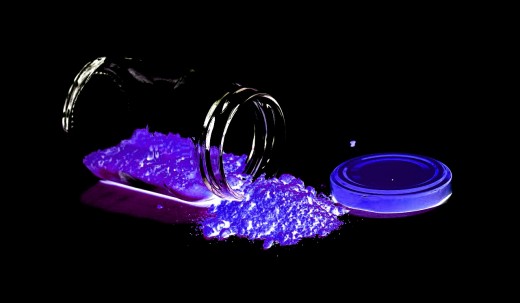Big Words - Powdered Alcohol, Cyclodextrins, and Cholesterol

Cyclodextrins are really fairly ordinary
Many times, when a person uses a great big word, the purpose of using it is to impress the listener or the reader. However, in the technical, scientific, and medical worlds, big words take up the smallest amount of space and carry the biggest amount of meaning.
Double duty stuff
I was reading some headlines on a "Popular Science" web page when I came across an interesting bit that described some chemicals called cyclodextrins. The article I was reading talked about how those cyclodextrins were made up of various dextrose (sugar) molecules attached together and used in a number of ways by the techies and, also, that they were used by non-techies for many purposes.
Here we are going to take a look at two of the more interesting sorts of cyclodextrins usage - getting rid of cholesterol plaques that can clog a blood-carrying artery in your body is one of the uses to which cyclodextrins are put. Another, but very uncommon use of cyclodextrins is the making of "powdered alcohol."
Are they talking about dry martinis?
"How in the world can anyone make 'powdered alcohol' ? I wondered.
It turns out that what was made was really a powder consisting of some very pure ethyl alcohol (drinking alcohol way too pure for people to drink) and one of the cyclodextrins. Not quite powdered alcohol, the powder was really a cyclodextrin carrying some alcohol with it whereever the powder might go. It was interesting to read about it, even so.
Powder power
Of greater interest was the conjecture about using one or more of the cyclodextrins as a medication. New to me, but not at all new to cyclodextrin users in medical, pharmacology, and food industries who have years of using those chemicals behind them. This is discussed in the article by some university researchers on the "bad stuff" folks should know about using cyclodextrins in living creatures, such as you and me.
Some experiments have been performed to see if cyclodextrins could be employed to pull cholesterol off of artery walls. These live animal studies were done using laboratory rats as the test subjects. According to the "Popular Science" article, there was some interesting success made in the studies to date. More work is planned, so it was written.
Why even bother?
The question might be asked, "Why search for new medications to get the cholesterol out of the body when we already have all of those statin drugs to handle that job for us?"
All that I would say about statin drugs is that they are not for everyone. My family doctor prescribed one of the widely-used statins, the generic equivalent of "Lipitor." Within the first week of swallowing those statin pills, my legs and feet swelled up so much that I could scarcely stick my feet into socks. I quit taking those statins and, after another week, I was skinny-legged once more - and alone again with my cholesterol.
What I need is some memory powder
When I read those words about the ability of cyclodexrins to strip artery wall cholesterol from the plaques that were narrowing rat artery walls, I was reminded of reading similar words a number of years ago - so long ago that I no longer have the literature references available to me to list here.
However, memory of those old research papers reminds me of the substance of that early work.
Not microbe hunters - these two were after cholesterol
The researchers were two medical men, one of them quite famous - Dr. Linus Pauling and Dr. Matthias Rath. Their work brought them to the conclusion that increased dietary vitamin-C combined with one or more common amino acids served to clear arteries of cholesterol plaques in humans and other animals.
Their thinking was much the same as is that of those working with cyclodextrins to clear plaque cholesterol from arteries; that is, the administered cyclodextrins combine with cholesterol and take it away from the clogging plaques, eliminating the excess and harmful cholesterol from the body. In the thinking of Pauling and Rath, the administered amino acid (which I believe was L-lysine) combined with cholesterol so as to pull the plaques apart and help remove them.
Do these cyclodextrins work the same way as vitamin-C plus amino acid?
Exactly how the vitamin-C was involved in the Pauling/Rath experimentation, I do not know other than that its function included the "healing" of any localized artery injuries. Those injuries were cited as being spots along the insides of blood vessels at which cholesterol plaques tended to start growing so as to clog arteries with their bulk.
Let your fingers do the walking and your eyes do the reading
Articles of this type make for interesting reading. In particular, the "Sagepub" article contains a ton of literature references, useful to anyone curious about what has been done as to cyclodextrins thus far, and what may be forthcoming. As to the Pauling/Rath articles, just stick their names into one of the better search engines, and a flood of references will fall out of your computer monitor.








